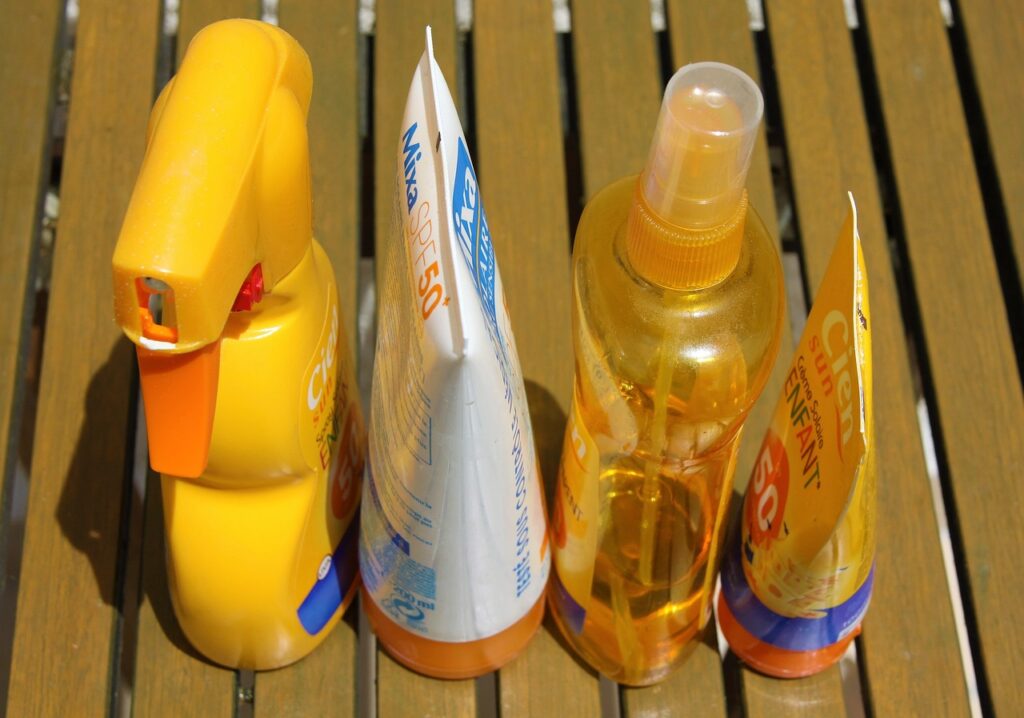Unraveling the Sun’s Gifts and Safeguarding With Sunscreen
go.ncsu.edu/readext?1010686
en Español / em Português
El inglés es el idioma de control de esta página. En la medida en que haya algún conflicto entre la traducción al inglés y la traducción, el inglés prevalece.
Al hacer clic en el enlace de traducción se activa un servicio de traducción gratuito para convertir la página al español. Al igual que con cualquier traducción por Internet, la conversión no es sensible al contexto y puede que no traduzca el texto en su significado original. NC State Extension no garantiza la exactitud del texto traducido. Por favor, tenga en cuenta que algunas aplicaciones y/o servicios pueden no funcionar como se espera cuando se traducen.
Português
Inglês é o idioma de controle desta página. Na medida que haja algum conflito entre o texto original em Inglês e a tradução, o Inglês prevalece.
Ao clicar no link de tradução, um serviço gratuito de tradução será ativado para converter a página para o Português. Como em qualquer tradução pela internet, a conversão não é sensivel ao contexto e pode não ocorrer a tradução para o significado orginal. O serviço de Extensão da Carolina do Norte (NC State Extension) não garante a exatidão do texto traduzido. Por favor, observe que algumas funções ou serviços podem não funcionar como esperado após a tradução.
English
English is the controlling language of this page. To the extent there is any conflict between the English text and the translation, English controls.
Clicking on the translation link activates a free translation service to convert the page to Spanish. As with any Internet translation, the conversion is not context-sensitive and may not translate the text to its original meaning. NC State Extension does not guarantee the accuracy of the translated text. Please note that some applications and/or services may not function as expected when translated.
Collapse ▲Isn’t it amazing how our relationship with the sun is so complex? The sun actually does a lot for us, like giving us Vitamin D to help our bodies absorb calcium and keep our bones strong. Plus, soaking up some sun in moderation can really boost our mood, help us sleep better, and even reduce stress. It just goes to show that a little sunshine can do wonders for our overall well-being!
Searching online for information about sunscreen might have left you feeling uneasy about using these lotions and creams on yourself and your family. Dr. Jennifer Lin, an assistant professor of dermatology at Harvard Medical School, urges the public not to let myths deter them from protecting their skin.
Sunscreen does block ultraviolet B rays, which are important in generating Vitamin D in the skin. However, because most people apply far less than the recommended amount (about a teaspoonful to the face and one shot glass–sized amount to the body) of sunscreen, users typically aren’t deficient in vitamin D. Your doctor can recommend a vitamin D supplement, such as 800 IU of vitamin D3 daily if you’re concerned about a vitamin D deficiency.
The term “sunscreen” usually refers to chemical sunscreens that contain active ingredients designed to absorb UV rays and prevent skin damage. Common ingredients include oxybenzone, avobenzone, octisalate, octocrylene, homosalate, and octinoxate. On the other hand, “sunblock” typically refers to physical sunscreens, which act as a physical barrier by reflecting UV rays off the skin. The key active ingredients in sunblocks are zinc oxide and titanium dioxide, which provide robust protection against harmful effects.
Oxybenzone has attracted considerable attention due to concerns that it may function as a hormone disruptor. Hormone disruptors are chemicals that can cross cell membranes and potentially interfere with the body’s natural hormone production. However, there is no conclusive evidence that oxybenzone is harmful to humans. The studies raising these concerns were conducted on rats, which were fed oxybenzone directly. According to a 2017 study in the Journal of the American Academy of Dermatology, it would take an individual 277 years of typical sunscreen use to reach the systemic dose that produced effects in these rat studies.
The Extension office does not recommend avoiding sunscreens with oxybenzone. However, if individuals choose to avoid it, they should be aware that this chemical is also present in many other common products such as plastic, hairspray, and nail polish.
It’s important to note that sunscreen alone is not a comprehensive sun safety strategy. Even when applied correctly, sunscreen cannot block all of the sun’s UVA and UVB rays. To maximize protection, seek shade, wear sun-protective clothing, use a hat and UV-blocking sunglasses, and reapply sunscreen regularly. Make sure to apply a thorough coat about 15 minutes before going outdoors. These additional measures can help protect against burns and skin damage effectively.





